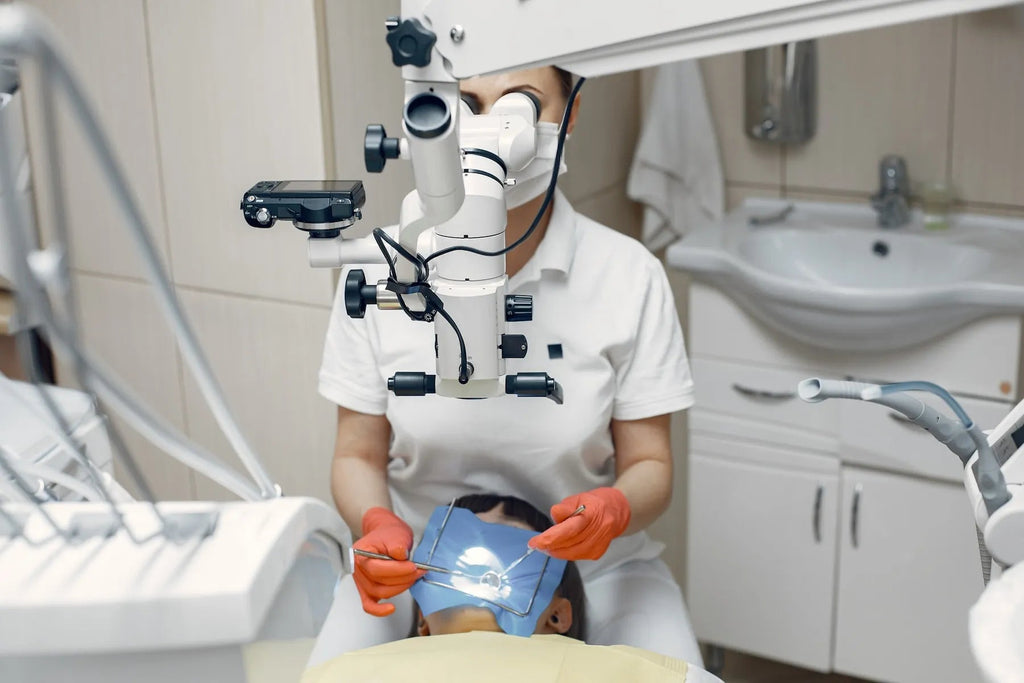
Latest Advancements in Dental Implant Tools & Techniques

Latest Advancements in Dental Implant Tools & Techniques
1. Introduction
Losing a tooth used to be a big problem. People had to either live with a gap in their smile or use dentures, which often felt uncomfortable and could move around while eating or talking. Dental implants changed everything by offering a way to replace missing teeth that feels just like natural teeth.
Over the years, dental implant technology has improved a lot. New tools and techniques have made the process faster, easier, and less painful. Dentists can now place implants with better accuracy, which means fewer complications and quicker healing.
If you are a dentist looking for high-quality dental instruments in Canada, it’s important to stay updated with these changes. Let’s look at how dental implants have evolved and how modern tools are making them better.
2. How Have Dental Implants Changed Over Time?
In the past, people had limited choices when they lost a tooth. They could get:
· Dentures: These are removable sets of false teeth, but they can feel uncomfortable and slip out when eating.
· Bridges: These involve attaching a false tooth by using the neighboring teeth for support, which can weaken those teeth over time.
Then came dental implants, a more permanent and natural-feeling solution. At first, dental implants were difficult to place. Dentists had to rely on basic tools and their own judgment, which sometimes led to mistakes. The procedure could also be painful and take a long time to heal. Now, thanks to the technology, implants are:
· Placed more accurately with digital tools.
· Less painful due to improved techniques.
· Made from stronger materials that help them last longer.
3. The Newest Tools & Technologies in Dental Implants
3.1. High-Powered Microscopes for Better Accuracy
Dentists used to rely only on their eyesight to place implants. But since the human eye can’t see tiny details clearly, there was always a risk of slight misplacement. Now, high-powered microscopes allow dentists to see everything up close, ensuring that the implant is placed in exactly the right spot.
This means:
· The implant stays in place better.
· Patients heal faster.
· There is less pain after the procedure.

3.2. 3D Scanning for Better Planning
Before, dentists used regular X-rays, which only gave a simple, flat image of the mouth. These images didn’t show enough detail. Now, dentists use 3D scanners, which create a full, detailed picture of the jaw and teeth.
With 3D scanning, dentists can:
· See if the jawbone is strong enough to hold an implant.
· Plan exactly where to place the implant before the surgery even begins.
· Reduce mistakes, making the procedure safer and more successful.
If you are a dentist looking for precision tools for dental implants, you can check out our dental explorers and bone-cutting forceps, which help with accurate placement.
3.3. Smart Dental Implants
One of the latest advancements in dental implants is smart implants. These implants have tiny sensors inside them that send information to the dentist.
These sensors can:
· Check how well the implant is healing.
· Warn the dentist if there are any problems.
· Help prevent implant failure by detecting issues early.
This makes implants safer and reduces the chances of complications.
3.4. Computer-Guided Implant Placement
Before, dentists placed implants by hand, using their best judgment. Now, computers help guide the process, making it much more precise.
This means:
· The implant is placed in exactly the right position.
· The risk of mistakes is much lower.
· The patient experiences less pain and a quicker recovery.
If you’re interested in how digital tools are improving dentistry, check out our blog on nanotechnology in dental instruments.
3.5. New Materials for Stronger Implants
In the past, some people had allergic reactions to the metals used in implants, or their bodies did not accept the implant well. Today, implants are made from materials that the body accepts more easily. Some new implants even have special coatings that help prevent infections and make healing faster.
If you are a dentist who performs implant surgeries, our periodontal probes and diagnostic instruments can help you check healing progress more accurately.
4. New Techniques That Make Implants Easier & Safer
4.1. Flapless Implant Surgery (Less Cutting, Less Pain)
Before, dentists had to cut open the gums to place an implant, which caused bleeding, pain, and swelling. Now, with flapless surgery, dentists can place implants with minimal cutting or no cutting at all.
This means:
· Less pain and discomfort for the patient.
· Faster healing time.
· Lower risk of infections.
4.2. Teeth in a Day – No More Waiting for Months!
Previously, after getting an implant, patients had to wait several months before getting the crown (the visible part of the tooth). Now, with “Teeth in a Day” technology, patients can get a crown on the same day as the implant surgery.
This means:
· No waiting for months to complete the treatment.
· No need for temporary dentures.
· Patients can smile and eat confidently right away.
4.3. Improved Bone Grafting
Some people do not have enough bone in their jaw to support an implant. In the past, bone grafting was a slow and complicated process. Now, new materials help rebuild the bone faster and make the procedure easier.
If you perform bone grafting procedures, our extraction forceps and dental curettes are designed for precise handling of bone material.
5. The Future of Dental Implants
As technology continues to improve, dental implants will become even better. Here are some exciting future advancements:
· Robots will assist dentists to make the procedure even more precise.
· Self-healing implants will help regenerate lost bone and gum tissue.
· Metal-free implants will become available for patients with metal allergies.
FAQs
Q1: How long do dental implants last?
With proper care, dental implants can last many years, sometimes even a lifetime.
Q2: Is getting an implant painful?
With modern techniques, most patients feel very little pain. Some mild discomfort may be present for a few days, but painkillers help manage it.
Q3: How do 3D scans help with implants?
3D scans give a detailed image of the jaw, allowing the dentist to plan the implant placement accurately.
Q4: Can dental implants fail?
Yes, but new smart implants can detect problems early and help prevent failure.
Q5: How much does a dental implant cost?
The cost depends on the dentist, location, and materials used, but newer technology is helping make implants more affordable.
Conclusion
Dental implants have improved greatly over the years. Thanks to better tools and new techniques, getting an implant is now safer, less painful, and faster than ever.
For dentists looking for high-quality dental instruments in Canada, staying updated with these advancements will help them provide the best care to their patients.
Looking for more insights? Check out our blogs on “Dental Explorers Vs Modern Technology”, “The Future of dental instruments “ and “Evolution of Dental Surgical Instruments”.













